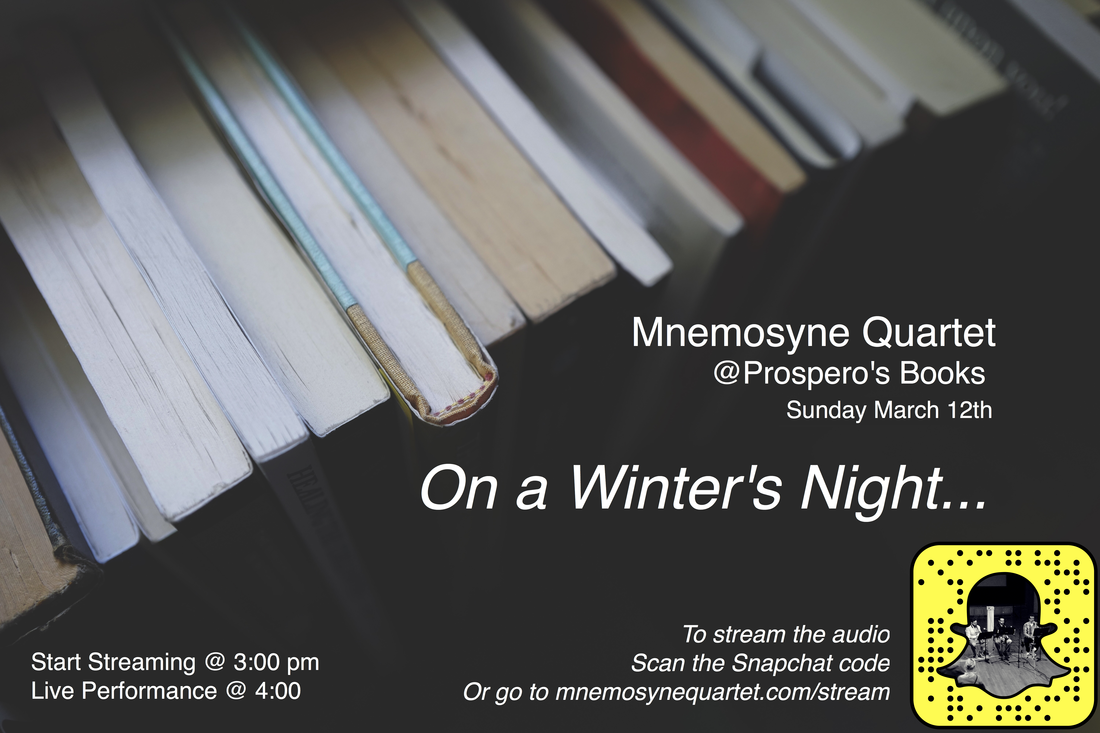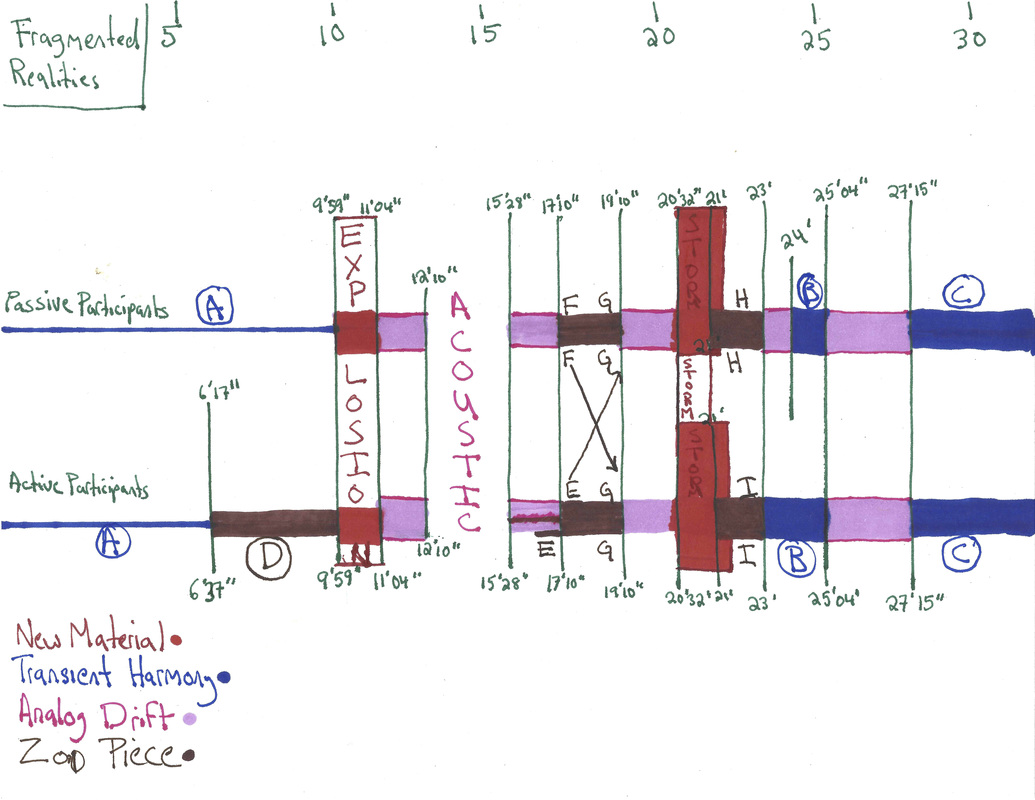|
The second part of Winter Traveler takes the meta narrative that begins the whole book and uses it as a structural device. My voice continues to read each top level narrative chapter, but each chapter is transformed beyond recognizable words and they are layered atop one another to serve as a structural drone for our improvised instrumental performance. I time shift many of the elements, stretching and pulling like taffy. Piling them one atop another so that something like the shadows of the words are cast. In this way, my reading is transformed into a spectral riverbed for the rest of the book to occur over.
In the instrumental performance, Members of Mnemosyne will be playing musical elements taken from the electronics of the first part. The players will start out coupled with the speaker projecting their own reading, playing in the same keys that each is tuned to, and separated in space from each of the other members. These phrases and melodies, having been heard by the audience members once already tonight, serve to ground the eventual sound mass that evolves out of the voices. Tying events together in this way uses our memory to facilitate the meaning-making process for each listener. The same vocal manipulations I employed in the first part are applied to recordings of Mnemosyne’s other members, as we each read chapters later in the book. These recordings are arranged spatially so that you can understand each speaker if you are standing next to it; but if one wanders about the room, different words and passages will jump out, creating a palimpsest of words and sounds. This is inspired by several ideas put forth in the main narrative of the text regarding simultaneity and linearity and my own curiosity about the ways in which we process information. This also serves as artistic commentary about the way we consume information in today’s hyper velocitized media environment. Nobody seems to value the patience implicitly required by engaging in the act of reading. Everyone seems compelled to produce a TL;DR when they type in a massive wall of text—so this is a musical depiction of that.
0 Comments
On a Winter’s Night A Traveler and its translation capture the rich imagination of the author, who charts a course through an expansive and mellifluous vocabulary. Audience members are encouraged to begin streaming the story on their phones an hour before they've even arrived at the venue. When they arrive they'll be greeted by a continuation of what they've already been listening to, as it spreads out from their individual space to a collective space we are all experiencing.
|


 RSS Feed
RSS Feed